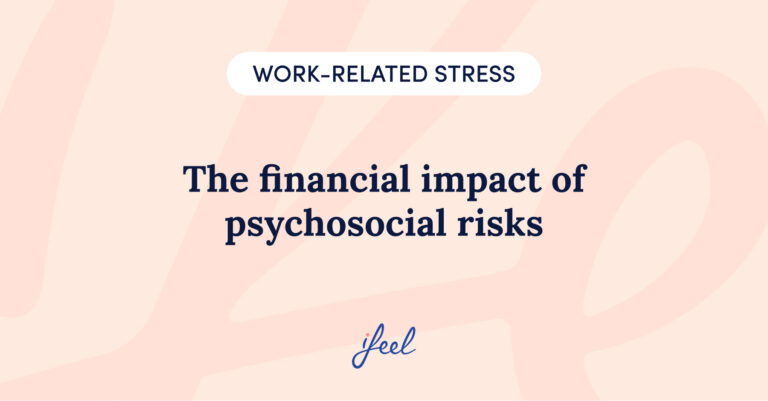Preventing the development and consolidation of a toxic work environment should be among the priorities of all employees, especially those responsible for managing a company’s human capital.
People are complicated and working involves sharing a work environment and also contributing to creating it every day with our attitude and our way of working. This shared responsibility can be solved correctly and favor the team’s performance or it can become a toxic work environment and become the biggest obstacle to achieving the objectives set.
In this article, we will explain what a toxic work environment is, how to detect it and how to begin to address it.
What is a negative work environment?
One of the things that should not be lacking in a company for employees to feel at ease is the work environment. However, we must not confuse the absence of work motivation or the desire to go to work and be fully involved in the job with the presence of a toxic work environment.
It is obvious that a negative work environment has an enormous capacity to suppress work motivation, but this is also influenced by the personal moment that each worker is going through. Thus, the work environment may be positive but a worker may be at the end of their natural cycle as a member of the company, or uncomfortable because they are not benefiting from the good moment the company is going through.
To determine whether the workplace is a toxic work environment, we have to look at the motivation expressed by the members of the workforce, not individually, but as a whole.

A toxic work environment reflects on relationships
A toxic work environment goes beyond a “bad work environment” that may be caused by dysfunctional corporate dynamics or a temporary lack of success. Although these may negatively affect the workforce’s morale, they do not seriously damage the emotional bonds that exist between employees.
From this perspective, toxicity is more than just discomfort: it also implies the poisoning of relationships. A bad working environment may simply be a lack of tone, brightness, and energy due to a generalized bad organization or to processes that impact the whole team equally. The team tends to cohere in the face of shared adversity, generating support in the face of a toxic work environment, of which they are the victims and not the culprits.
Therefore, we can consider that a toxic work environment is a result, among other factors, of a deep affective discord between colleagues. This generates a lack of personal and collective responsibility to contribute to the proper functioning of the team, giving rise to individualism and every man for himself. This disengagement encourages the creation of small cliques that operate as a “survival refuge” in the face of the toxic work environment, but which are the opposite of true group cohesion.
How do I know if I am in a toxic work environment?
The toxicity of a work environment can be so subtle that it sometimes goes unnoticed. However, it is important that we learn to pinpoint some signs that, persistent over time, may indicate the existence of a toxic work environment.
1. Lack of trust
It manifests itself in the form of aggressive competitiveness, “stomping”, hostility, lack of cooperation or lack of companionship, envy, and comparative grievances.
2. Aggressiveness
It is not necessary to come to a physical confrontation for interactions to be aggressive: bad manners, suppressive or passive-aggressive behavior, rudeness, mobbing, or harassment at work also define a toxic work environment.
3. Tension
Everyone has a bad day or a run-in with a colleague from time to time, but when awkward silences, dry, low tones, and clenched facial and body expressions become habitual communication, something is going on.
4. Chaos
It is not so much that there is clutter in the middle, but rather a lack of clarity in methodologies and processes, inconsistencies, missing coordination spaces, and little validity of the agreements reached. Working in permanent chaos makes day-to-day work very difficult.
5. Abuse
They occur when the workload is excessive in relation to the deadlines, the employee does not have the necessary means, and the limits of the employment relationship are repeatedly pushed beyond what is acceptable for the employee’s well-being.
How to survive a toxic work environment
1. You do you
Stand your ground when necessary, but the rest of the time it is better to focus on your work. Set power struggles aside, which sometimes turn into pointless arguments over small spheres of influence that lead to nothing.
2. Stay out of it if you can’t find a solution
When the work environment has become toxic, it is essential there is a balance, not adding fuel to the fire. Provide solutions, calm and cold analysis. Do not heat up the atmosphere with complaints, fights, or bad faces that only generate more negativity. If you can’t do it, it’s better to stay out of it.
3. Accept your limits
Don’t burn yourself out trying to change what will not change, trying to make yourself heard by people who are not willing to do so, or trying to influence processes in which you have no room for maneuver or on which you lack information.

Learn how to avoid a toxic work environment with ifeel
Ifeel has created an emotional well-being program for companies, designed by its team of leading psychologists to help companies detect when their employees are exposed to a toxic work environment and protect the team’s mental health.
Thanks to this partnership, HR managers can receive personalized, data-driven advice on how to prevent their team members from feeling intoxicated by the company’s work environment. You can try our program today and start benefiting from its resources.
In addition, ifeel’s emotional well-being program for companies offers employees a mental health care service structured at different levels depending on what they need at any given moment.
Employees can access a variety of mental health care tools via ifeel’s app. On a second level, they can receive emotional support through a chat with one of our platform’s licensed psychologists. If additional help is needed over time, they only have to access the third level: online psychological therapy with a psychologist who specializes in cases such as theirs.
If you would like more information about our emotional well-being program for companies, get in touch and we will contact your team as soon as possible. We hope you found this post on how to overcome a toxic work environment interesting. You may also be interested in this post about the advantages of using ifeel’s workplace mental health platform.







